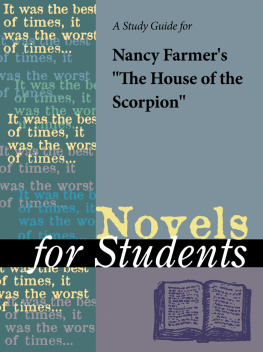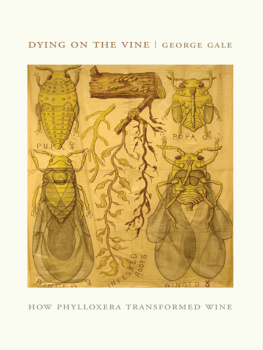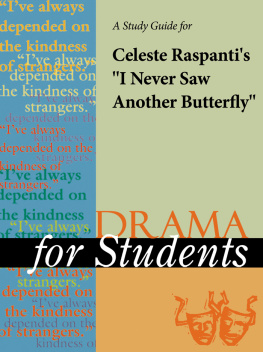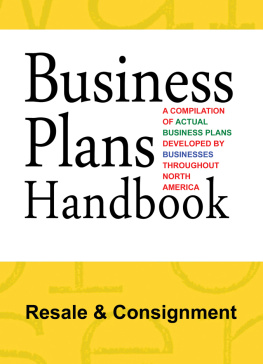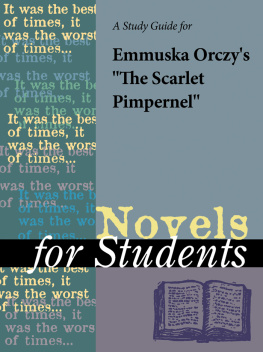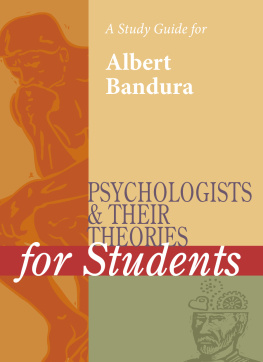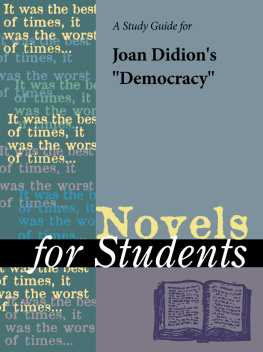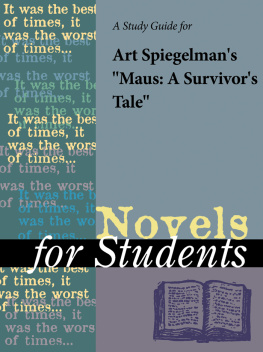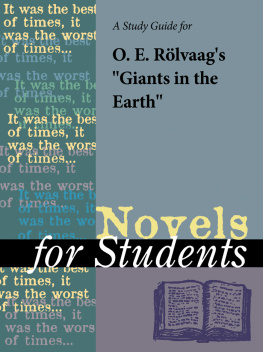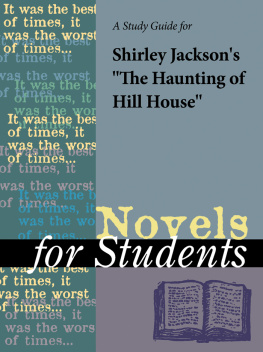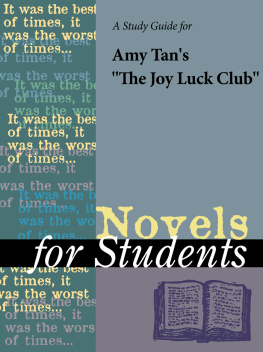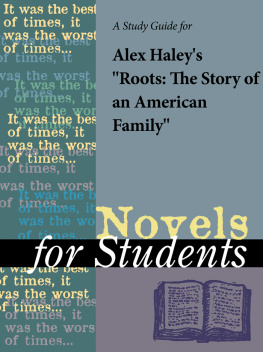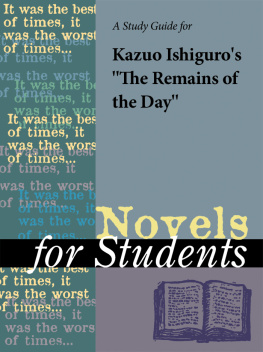TABLE OF CONTENTS
Guide
Novels for Students, Volume 43
Project Editor: Sara Constantakis
Rights Acquisition and Management: Robyn Young
Composition: Evi Abou-El-Seoud
Manufacturing: Rhonda Dover
Imaging: John Watkins
Product Design: Pamela A. E. Galbreath, Jennifer Wahi
Digital Content Production: Allie Semperger
Product Manager: Meggin Condino
2013 Gale, Cengage Learning
ALL RIGHTS RESERVED. No part of this work covered by the copyright herein may be reproduced, transmitted, stored, or used in any form or by any means graphic, electronic, or mechanical, including but not limited to photocopying, recording, scanning, digitizing, taping, Web distribution, information networks, or information storage and retrieval systems, except as permitted under Section 107 or 108 of the 1976 United States Copyright Act, without the prior written permission of the publisher.
Since this page cannot legibly accommodate all copyright notices, the acknowledgments constitute an extension of the copyright notice.
For product information and technology assistance, contact us at Gale Customer Support, 1-800-877-4253.
For permission to use material from this text or product, submit all requests online at www.cengage.com/permissions.
Further permissions questions can be e-mailed to permissionrequest@cengage.com
While every effort has been made to ensure the reliability of the information presented in this publication, Gale, a part of Cengage Learning, does not guarantee the accuracy of the data contained herein. Gale accepts no payment for listing; and inclusion in the publication of any organization, agency, institution, publication, service, or individual does not imply endorsement of the editors or publisher. Errors brought to the attention of the publisher and verified to the satisfaction of the publisher will be corrected in future editions.
Gale
27500 Drake Rd.
Farmington Hills, MI, 48331-3535
ISBN-13: 978-1-4144-9486-9
ISBN-10: 1-4144-9486-6
ISSN 1094-3552
This title is also available as an e-book.
ISBN-13: 978-1-4144-9272-8
ISBN-10: 1-4144-9272-3
Contact your Gale, a part of Cengage Learning sales representative for ordering information.
Printed in Mexico
1 2 3 4 5 6 7 17 16 15 14 13
The House of the Scorpion
Nancy Farmer
2002
Introduction
The House of the Scorpion (2002) is a novel by Nancy Farmer, a celebrated author of science fiction and fantasy for young adults. It is set about one hundred years in the future, when Mexico (renamed Aztln in this future time) and the United States have each turned over part of their border territory to a group of drug lords, who produce drugs freely in the land they call Opium while they keep people from crossing the borders illegally. The novel interweaves a recognizable not-too-distant past, as the residents of Opium live without computers, cell phones, and other modern conveniences, and a frightening future, when cloning and interfering with people's brains to make them into compliant workers are taken for granted. The protagonist is Matt, a clone created from the tissue of El Patrn, the wealthiest and most powerful of the drug lords. As he ages to adolescence, Matt struggles to determine his identity and his worth, as a clone and as a human, and tries to find friendship and family.
The House of the Scorpion, Farmer's third Newbery Honor Book, also won the National Book Award. It has been translated into at least seven languages, including Chinese, French, and Slovenian.
Author Biography
Farmer was born on July 9, 1941, in Phoenix, Arizona, the youngest of three children of Frank and Sarah Coe. At the age of three, she caught measles from her sister Mary; to make amends, Mary taught Farmer to read at a level far beyond her years. However, dyslexia kept Farmer from doing well in school. By the time she was nine, her father was running a hotel in Yuma, Arizona, near the United StatesMexico border. Farmer helped out at the front desk and made friends with cowboys, railroad men, and other travelers. Many days, she skipped school to explore the desert and the banks of the Colorado River, but she read all of the books and magazines left behind at the hotel and eventually found her way to the public library.
After graduating from Reed College in 1963, Farmer took a two-year Peace Corps assignment in India. For a few years after returning, she worked in a biology lab at the University of California, Berkeley. In 1972, she went to Africa, where she lived for seventeen years. First she lived in Mozambique, where she worked as a chemist and entomologist. Next she went to Zimbabwe to work on tsetse fly eradication; in 1976, she met literature professor Harold Farmer in Harare, Zimbabwe, and they married. When she was forty years old, Farmer enjoyed reading books to the couple's four-year-old son, Daniel, and decided to try writing. The quality of her work was quickly recognized, and her second novel, The Ear, the Eye, and the Arm (1989), first published in Zimbabwe, became a success in the United States as well when it was reissued in 1994; it was named a Newbery Honor Book, among other recognitions. In 1988, Farmer and her family returned to California, where she wrote and sometimes took work as a lab technician. By 1992, she was able to write full-time.
As 2012 drew to a close, Farmer had published ten novels for young adults in addition to four picture books, and her work had been published in twenty-six languages. Three of her novels, The Ear, the Eye and the Arm; another novel set in Africa, A Girl Named Disaster (1996); and The House of the Scorpion (2002), were named Newbery Honor Books; The House of the Scorpion also won the 2002 National Book Award for Young People's Literature. Between 2004 and 2009, she published the three novels in the Sea of Trolls series before beginning to draft a long-promised sequel to The House of the Scorpion. She and her husband lived in Menlo, California, near the Cargill Salt-works, which she used as the model for the shrimp-harvesting factory in The House of the Scorpion.
Plot Summary
Chapters 15: Youth: 0 to 6
The House of the Scorpion opens in a laboratory, where human embryos are being grown in petri dishes. Only one survives long enough to be gestatedin a cow's uterusand harvested. Ordinarily, the newborn would have its brain damaged intentionally to dull its intelligence, but because this one is a Matteo Alacrn, it is spared. Five years later, that newborn is a boy named Matt, who lives with a woman named Celia in a small house surrounded by poppy fields. Celia is a cook in the Big House, and when she goes to work each day, she leaves Matt alone with the doors locked and the windows nailed shut. There is a clear bond of love between Matt and Celia, but she will not allow him to call her Mam, explaining that he has only been loaned to her.
One day, two children see Matt through the window, but he is too afraid to speak to them. Celia identifies them as Steven Alacrn, a thirteen-year-old boy from the Big House, and his friend Emilia Mendoza, also thirteen, whose father is a US senator. The next day, Steven and Emilia return with Emilia's younger sister, Mara. Matt breaks through the window and jumps out, landing in his bare feet on the shattered glass.

